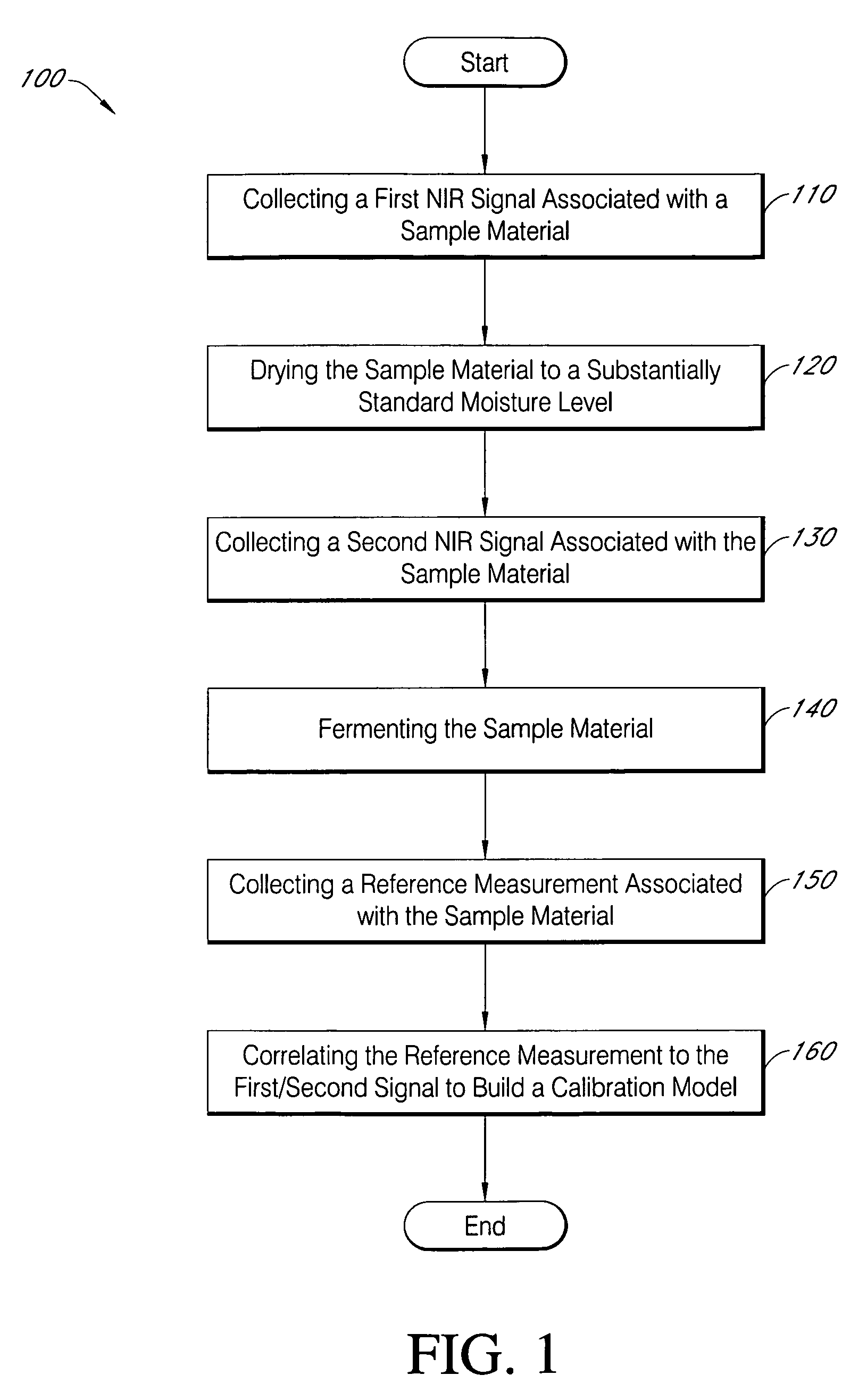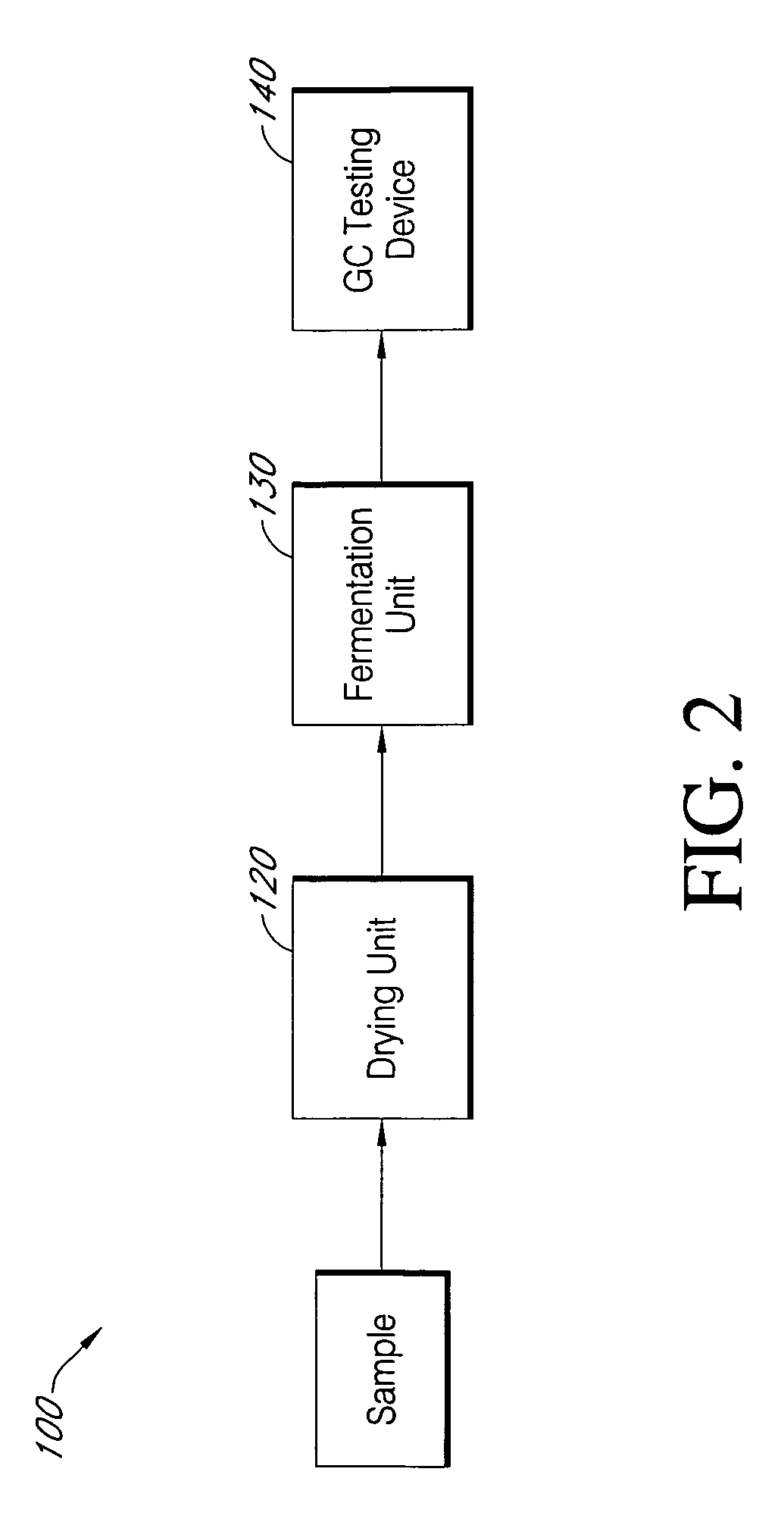High throughput screening platform for high ethanol production
a screening platform and high ethanol technology, applied in the field can solve problems such as challenges that need further investigation, and achieve the effect of high throughput methods and rapid and efficient manner
- Summary
- Abstract
- Description
- Claims
- Application Information
AI Technical Summary
Benefits of technology
Problems solved by technology
Method used
Image
Examples
experiment 1
Component Loss of Fermentation Components Due to Pasteurization Step in the HTS Fermentation Platform
Research Objective
[0110]Research Hypothesis: In order for the high throughput fermentation platform to provide accurate ethanol yield data, the ferment must be arrested prior to analysis. To arrest the ferment the yeast must be killed to prevent fermentation from occurring beyond the specific fermentation time point of interest. One way in which the yeast may be killed is to pasteurize the ferment, a method used in the brewing industry. Pasteurizing the ferments in the 20 ml headspace vials for a period of 45 minutes arrests the fermentation. Utilizing pasteurization as a method to kill the yeast may also cause loss of fermentation components due to evaporation. The hypothesis of this experiment is that the loss of any components due to evaporative loss is consistent across all headspace fermentation vials.
[0111]Technical Approach: One-hundred and eight (108) fermentations are conduc...
experiment 2
Waxy Near Isogenic Inbred Lines (NILS) Study
Research Objective
[0129]Research Hypothesis: This study hypothesizes that a near isogenic inbred line (NILS) of the waxy trait with 100% amylopectins will result in a faster accumulation of soluble dextrins as compared to non-waxy NIL corn, which in theory will result in a faster fermentation reaction in a high throughput dry grind process.
[0130]Technical Approach: 120 fermentations will take place in 20ml headspace vials. The 120 fermentations are divided into 2 treatments with 10 reps per time point for 2 maize lines. The time points are 24, 48, and 72 hours. The 2 treatments are: 1) 30% solids and 3) 36% solids. Table Sample Matrix of Waxy Near-Isogenic Lines Study summarizes the treatment groups.
[0131]
TABLESample Matrix of Waxy Near-Isogenic Lines StudyMaize LinesPedigreeSolidsTime PointRepsTotalWaxy NILC9RA30, 3624, 48, 72 hours10 / solid / time point60Non-waxy NILC930, 3624, 48, 72 hours10 / solid / time point60Project Total120
[0132]Work Pla...
experiment 3
Headspace Analysis of a Fermented Sample
Research Objective: Determine if Headspace Gas Chromatography is a Viable Option for the Ethanol HTS Platform.
Research Hypothesis:
[0152]Headspace gas chromatography coupled with flame ionization detection has been identified in the literature as a common method used to determine blood alcohol content. This method of ethanol detection was applied to an alcoholic fermentation of maize in order to determine if the method was applicable for a high throughput screening platform. Included in the analysis were an ethanol sample, the analyte of interest, and an isopropanol sample, the intended internal standard for the proposed HTS method. The 2 alcohols were analyzed in order to determine if these could be resolved in a chromatogram.
[0153]Technical Approach: An Hewlett-Packard HP6890GC system with a Hewlett-Packard HP7694 headspace autosampler and an FID was used to analyze 3 sample materials. The 3 sample materials were: A) a 15% aqueous ethanol sta...
PUM
| Property | Measurement | Unit |
|---|---|---|
| temperature | aaaaa | aaaaa |
| temperature | aaaaa | aaaaa |
| temperature | aaaaa | aaaaa |
Abstract
Description
Claims
Application Information
 Login to View More
Login to View More - R&D
- Intellectual Property
- Life Sciences
- Materials
- Tech Scout
- Unparalleled Data Quality
- Higher Quality Content
- 60% Fewer Hallucinations
Browse by: Latest US Patents, China's latest patents, Technical Efficacy Thesaurus, Application Domain, Technology Topic, Popular Technical Reports.
© 2025 PatSnap. All rights reserved.Legal|Privacy policy|Modern Slavery Act Transparency Statement|Sitemap|About US| Contact US: help@patsnap.com



